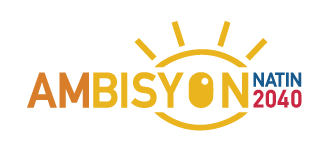Alberto Agra (BusinessMirror)
DO we live in a high- or low-trust society? How will public-private partnerships (PPPs) operate in such a society? How does trust or lack thereof shape a PPP policy or project?
The vision embodied in AmBisyon 2040 states that, “By 2040, the Philippines shall be a prosperous, predominantly middle-class society where no one is poor. Our people will enjoy long and healthy lives, are smart and innovative, and will live in a high-trust society.” This statement acknowledges the reality that Filipinos do not currently live in a high-trust society, and that it may take 23 more years before we live in such a society.
In a high-trust society, you believe that if you leave behind your latest cell phone or laptop unattended in a mall, you will find it in the same place or in the lost-and-found station, and whoever sees it will not keep it for himself or herself. In a low-trust society, you know and feel, despite fervent prayers, that most likely, your valuable possession will not be there and, in all likelihood, someone will take it.
In elections, in a high-trust society, you trust that your vote is counted, that one’s vote is his or her own, and the outcome of the political exercise truly reflects the will of the people. Conversely, in a low-trust society, there is a need for hundreds of poll watchers, padlocks for ballot boxes and 30 copies of election returns for government agencies and political parties.
In PPPs, there are four sets of stakeholders—government implementing agencies, the private-sector proponents (PSPs), regulatory agencies and us, the consumers, taxpayers and end-users. PPP, being relational, must be imbued with trust. Trust or absence of trust will determine the success or failure of the PPP.
In a high-trust society, we, the beneficiaries and the clients of a PPP arrangement, trust that the project will really benefit us; that government officials will not be corrupted; that bidders, proponents or challengers will not conspire with each other; that the PSP will meet its performance targets; that regulatory agencies will know how to calibrate between the interests of the PPP parties and the public; that other consumers will pay for what they use; and that civil-society organizations will be cochampions of PPP.
Where there is trust, all the four stakeholders will learn together, innovate together, act as stewards together, trust each other, so that the general welfare, our own welfare, will be “future-proofed” by PPPs.
In a low-trust environment, there is a fear that the successor administration unilaterally modify or even cancel PPP contracts; that losing bidders will seek injunctions so that no one else can get the contract; that litigants will always doubt the integrity of the courts in issuing a fair decision; and that parties to a PPP will doubt every decision or procurement made.
Trust cannot happen overnight. In a low-trust society, this will take years, possibly, 23. But this does not mean we should stop PPPs until all the stakeholders become trustworthy. The path to trust begins today.
